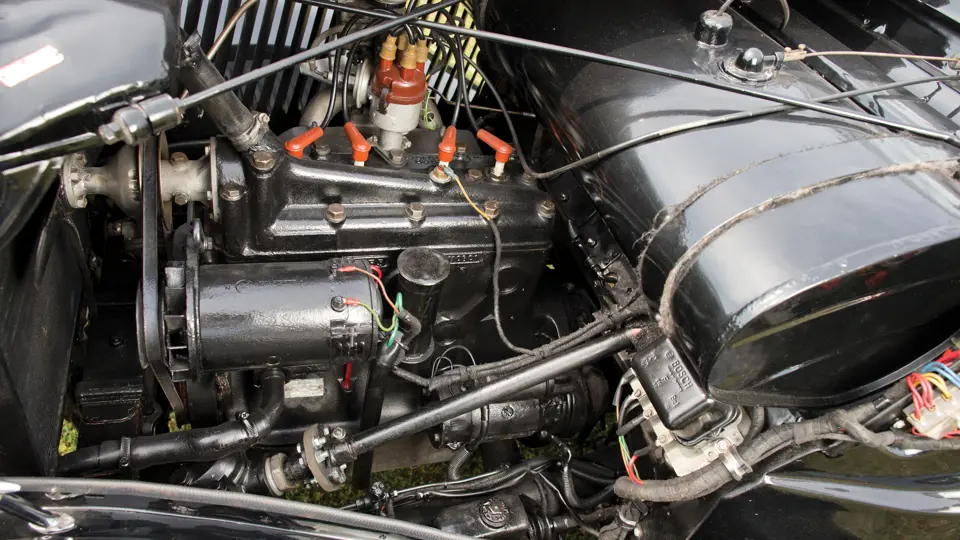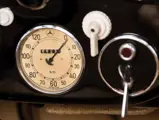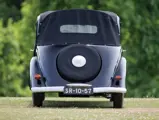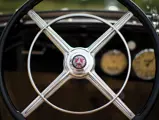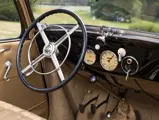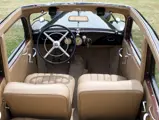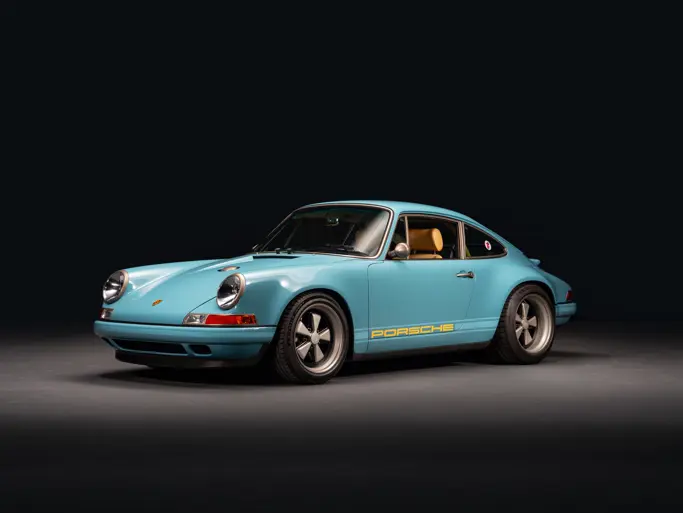38 hp, 1,697 cc inline L-head four-cylinder engine, four-speed manual gearbox, four-wheel independent suspension, and four-wheel hydraulic drum brakes. Wheelbase: 2,845 mm
Successor to the W15 six-cylinder 170 model, the 170 V, internal code W136, was slightly larger than its predecessor and more powerful, but it came with only four cylinders. Introduced in 1936, it had a more streamlined body than the 170 and was sold at a lower price. The “V” signified vorn, German for front, distinguishing it from the rear-engine 170 H model, with the “H” standing for heck, or rear. The 170 V fell naturally to taxi work, which is a role that Mercedes continues in Germany to this day.
This 170 V, delivered in August 1939 through the Daimler-Benz Königsberg branch, has the unusual cabriolet saloon body. It is essentially a four-door with a fold-back black fabric roof that gives open air to all passengers when opened. The side rails and windows, however, remain in place, providing shelter from the wind and cold. The black paint has a deep shine and exhibits only a few blemishes. The brightwork has all been recently re-plated, with the only flaws being a few spots where the undersurface was less than perfect.
The car is upholstered in tan leather, which is all in very good condition, except for some normal wear in places where the lowered roof has been in contact. The dashboard is painted gloss black and presents very well, whilst tan carpet lines the floor. A day-night mirror is mounted above the windscreen.
The rear of the car has an exposed spare tyre with a fitted black fabric cover. The engine compartment and undercarriage are generally clean and fully functional, but they are of driver quality and not overly-detailed. The 170 V was the most popular Mercedes model in its day, with more than 70,000 built from 1936 to 1942. The Cabriolet Saloon, however, is one of the more unusual variations, and it is seldom seen today.




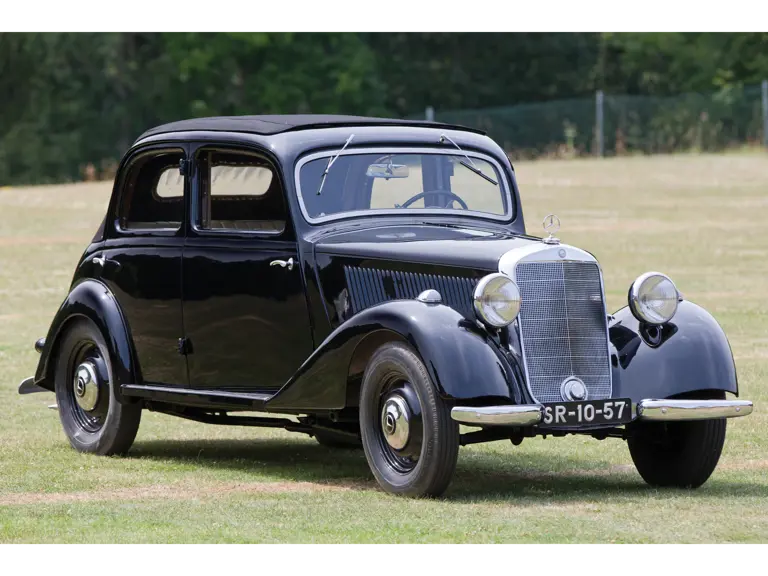

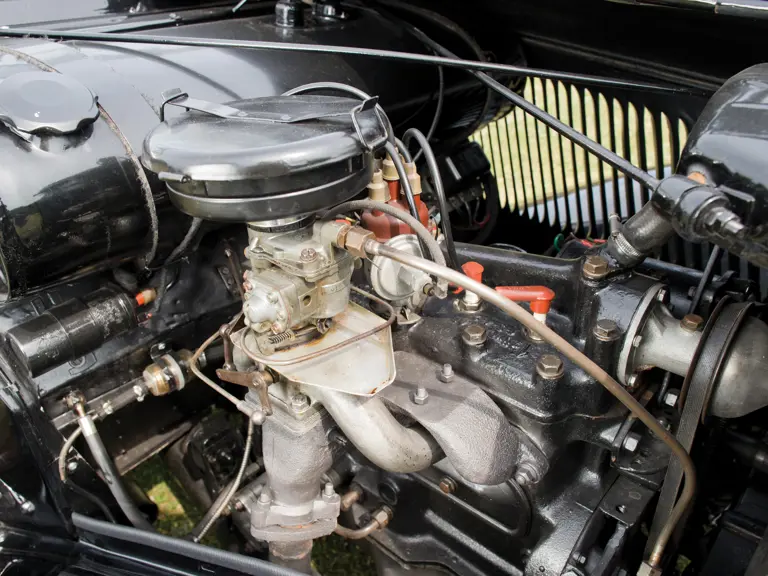

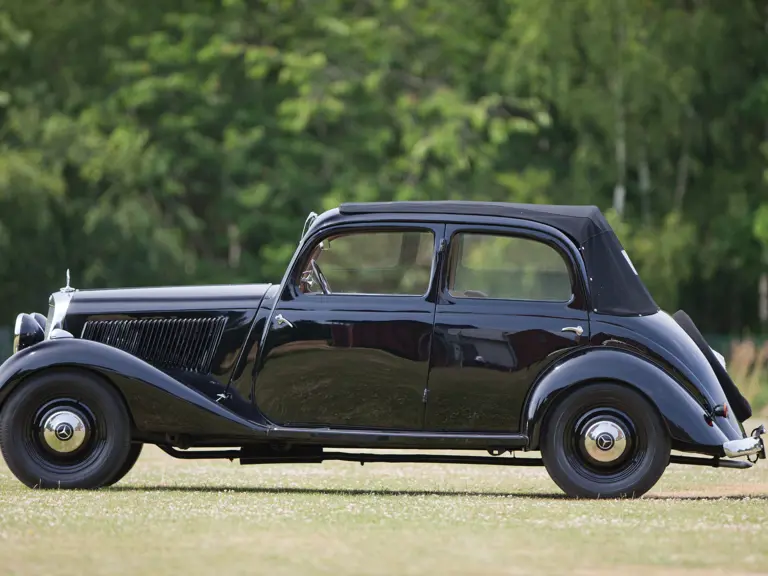
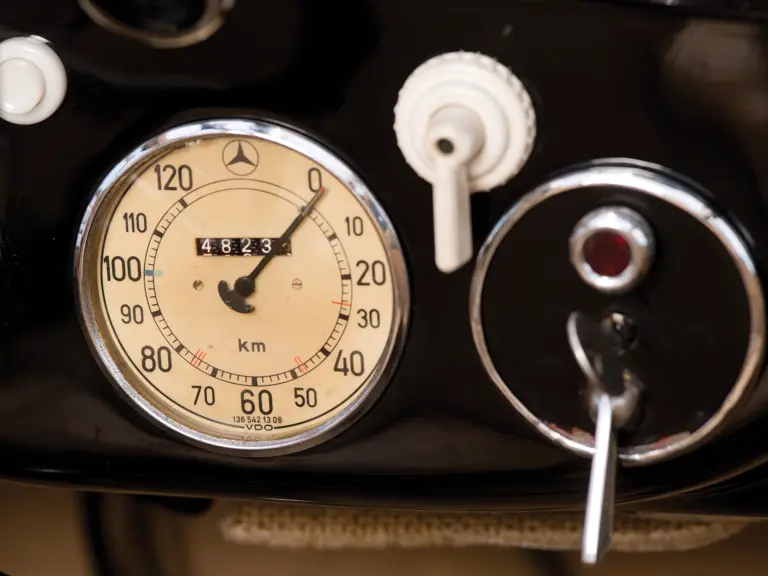


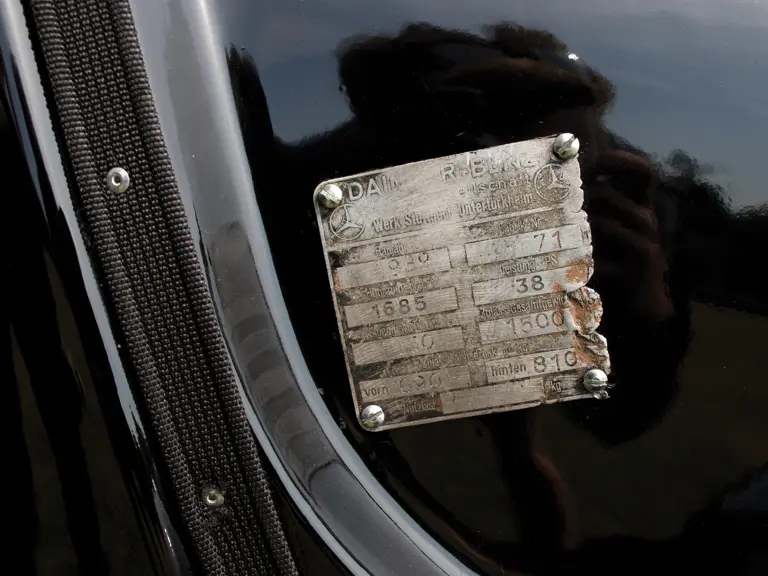
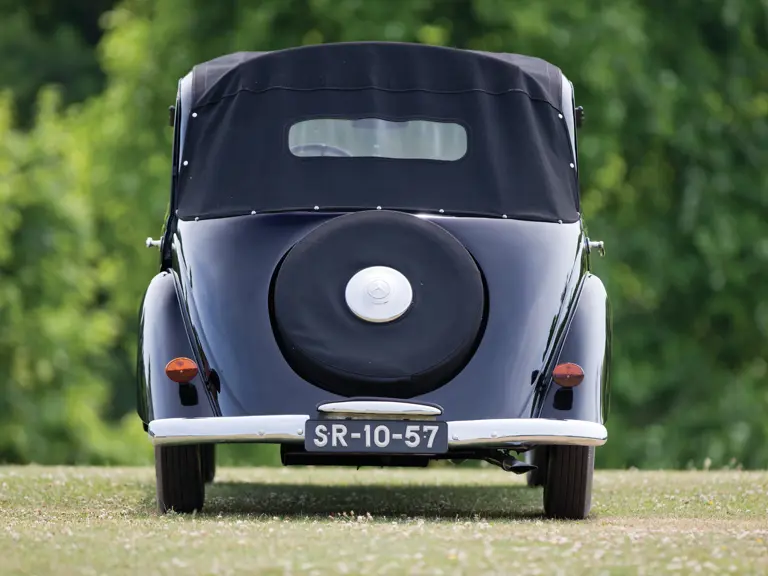

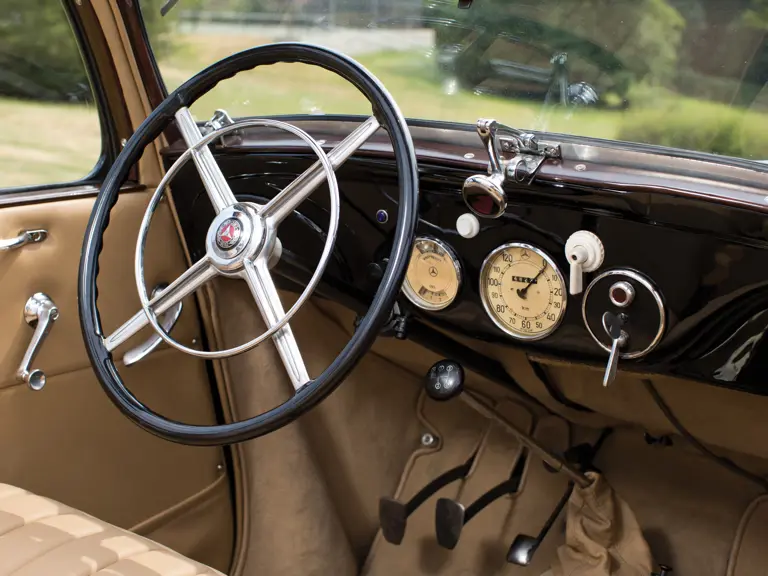
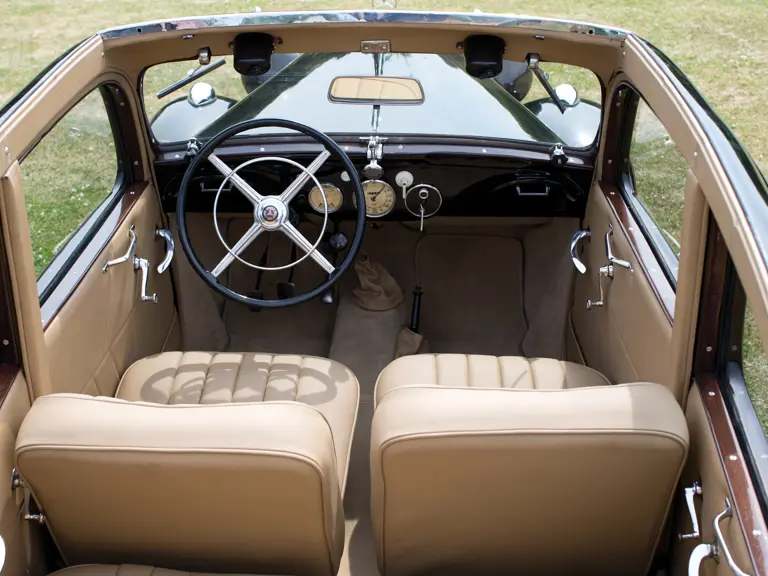
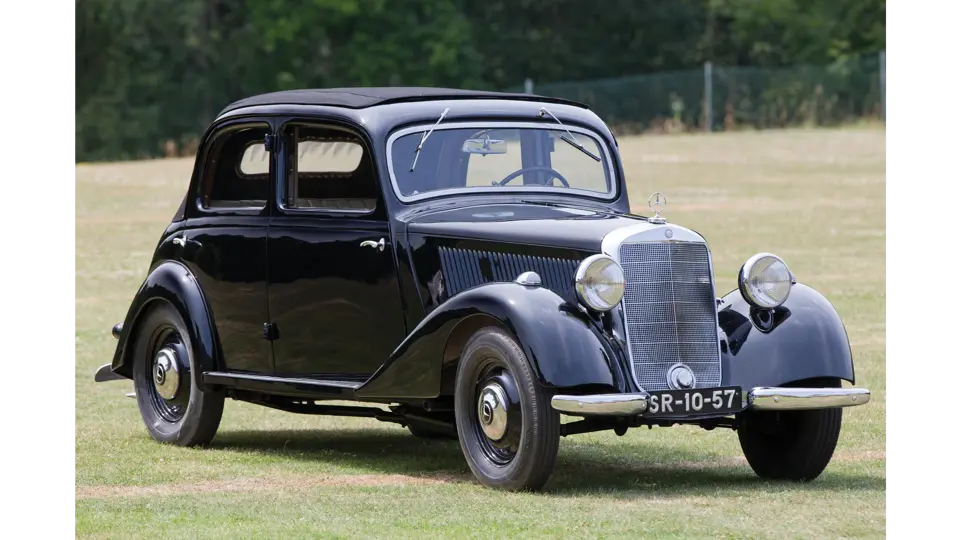
 | London, United Kingdom
| London, United Kingdom


